Highlights
- 2009 batch Karnataka Forest Officer, N Prabhakar Sangamesh & his team have been making efforts to conserve sparrows since 2016
- Because of their efforts, sparrows are back in the city of Belgavi and can be seen frequently
- On World Sparrow Day, Indian Masterminds presents the story of a green warrior conserving these tiny brown birds
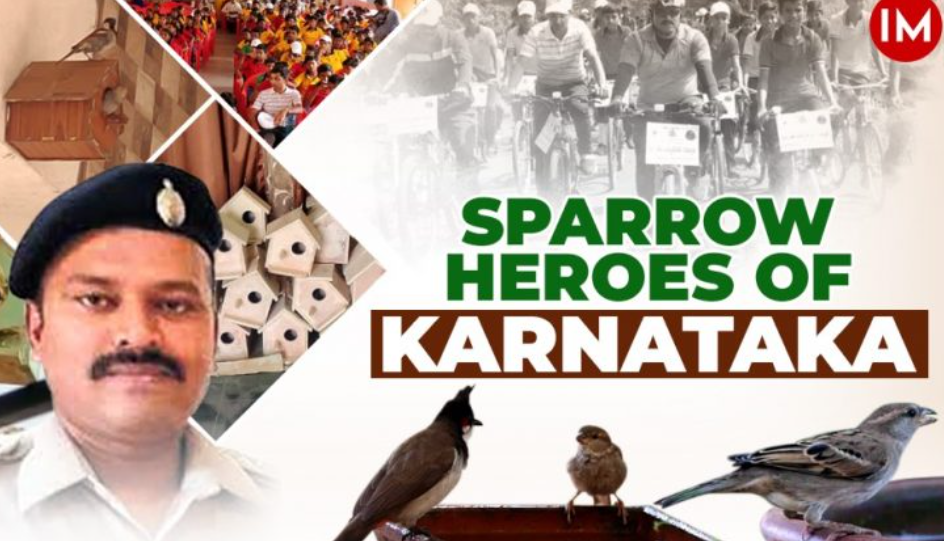
There was a time when sparrows used to trill frequently in our house’s courtyard. They built nests in almost every corner of the house. Fast forward to the present day; let alone the nests, even the sparrows are not visible chirping around. People in cities have probably forgotten that there was once a bird called a sparrow. The birds’ population is steadily diminishing, and many species of sparrow have already been proclaimed extinct.
Keeping this in mind, the 2009 batch, Karnataka Forest Service officer, Mr. N Prabhakar Sangamesh, and his team are continuously putting in efforts to conserve and protect the sparrows.
As a result of their efforts, sparrows have started becoming visible in the Belagavi district of Karnataka. Mr. Sangamesh and some colleagues established ‘The Sparrow Conservation Foundation’ in 2016 and launched a campaign to save and rescue beautiful sparrows. This foundation has also been instrumental in distributing hundreds of environmentally friendly nests and mud pots so far. The foundation is also planting thousands of trees to provide habitat for sparrows. In addition, they regularly organize awareness camps for sparrow conservation in schools, colleges, and public areas.
Indian Masterminds interacted with Mr. Sangamesh, the current Assistant Conservator of Forests (ACF), Belagavi, to learn more about his efforts and his foundation.
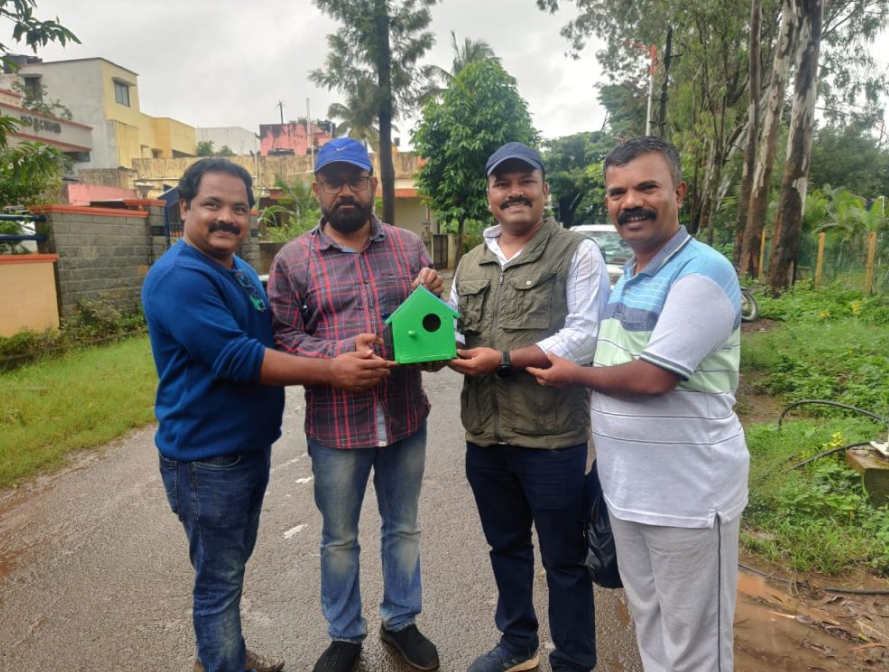
THE FOUNDATION
It all began in late 2016, when Sangamesh and a few of his friends established their foundation. They were concerned about the diminishing number of sparrows in the city. They then resolved to do something to protect these lovely and vital birds of nature.
As the popular saying goes, “Charity begins at home,” the officer and his colleagues also started conserving and protecting the sparrows from their own homes. They turned their home into a paradise for sparrows by installing nests and bird baths. They had no idea that their small efforts would one day grow into a movement to conserve these species.
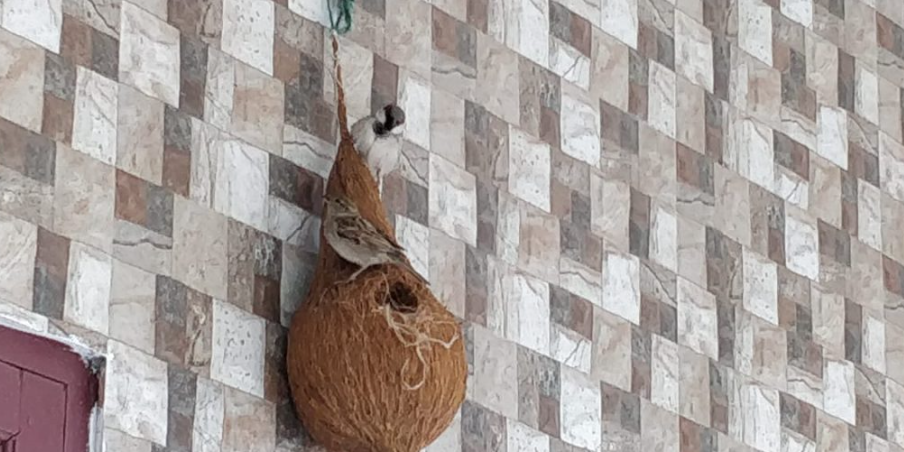
The foundation, which currently has over 60 members, distributes eco-friendly nests, mud pots, bird baths, and other necessities for sparrows. They also plant trees where sparrows could easily nest.
Mr. Sangamesh said, “Between 2017-18, more than 200 eco-friendly nests and 500 mud pots were distributed to people to provide shelter to the sparrows. Eco-friendly nests are the best homes for sparrows. This bird can’t live in concrete houses.”
REASONS
The primary cause of the diminishing sparrow population is a shortage of food and water. Changing lifestyles, increased urbanization, and increased use of pesticides in fields have all contributed to a decline in sparrow populations. Increasing temperatures is also one of the causes.
Mr. Sangamesh said, “Temperature has been increasing continuously every year for the last few decades. Due to this, sparrows are not even able to get water. Along with that, in cities, the birds do not get sufficient food and water. It even needs some specific trees to make its nests.”
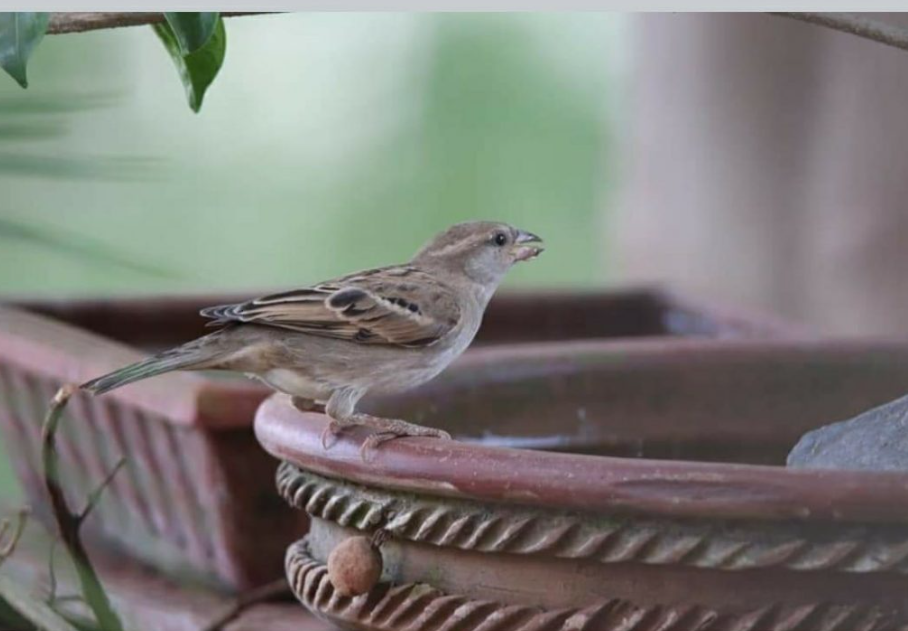
EFFORTS
The foundation has distributed more than 1500 eco-friendly nests and 3000 mud pots. Mr. Sangamesh shared with Indian Masterminds, “It is still not too late if we try hard. I always carry nests wherever I go and distribute them to people, whenever possible. We have provided bird nests and installed them in public places, be they schools, gardens, institutions, etc.”
They not only distribute bird baths and bird nests but personally go to install them to encourage people.
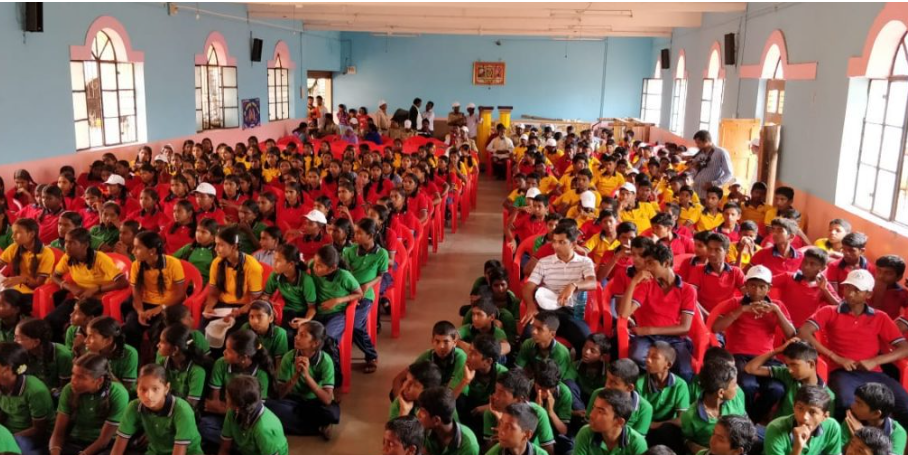
AWARENESS CAMP
The foundation holds awareness camps regularly to spread awareness about sparrows. Every year, at the beginning of summer, they visit every school, college, and colony in the city, organize camps, and spread knowledge.
He said, “We tell them how to save the sparrow, how to habitat them, what to do for their well-being, and what not to do. In this way, we are educating the public. We have carried out awareness campaigns, especially in government schools and hostels, as it is important to make children aware of sparrow conservation right from the beginning.”
Apart from Belgavi, the Foundation has carried out many campaigns and projects in cities like Vijayapura, Gadag, and Dharwad in Karnataka.
ECO-FRIENDLY
The foundation distributes sparrow necessities constructed entirely of environmentally friendly materials such as bamboo and grass. Previously, they used housing built of plywood and PVC pipe.
However, employing bamboo has proven to be advantageous because it supports farmers as well as regulates temperature.
PLANTING TREES
The creation of a natural habitat for birds is also crucial in the conservation of the sparrow. So, during the monsoon season, the foundation plants trees such as Ficus, Arali, Atti, Basari, Goni, and Ala species in public areas, schools, and universities, as well as on government land.
Each year, they strive to plant more than 500 trees. They have planted almost 3,000 of these trees so far. The foundation also distributes seeds for such plants from house to house.
IMPACT
The impacts of their efforts are clearly visible, as one can now spot sparrows in Belgavi.
He stated, “We can’t tell the number of sparrows because we need to conduct a census. However, there are clearly more sparrows than there were a few years ago, as these birds can now be seen across the city. We have received a great deal of encouragement and cooperation from the Karnataka Forest Department and senior officers in raising public awareness regarding sparrow conservation.”
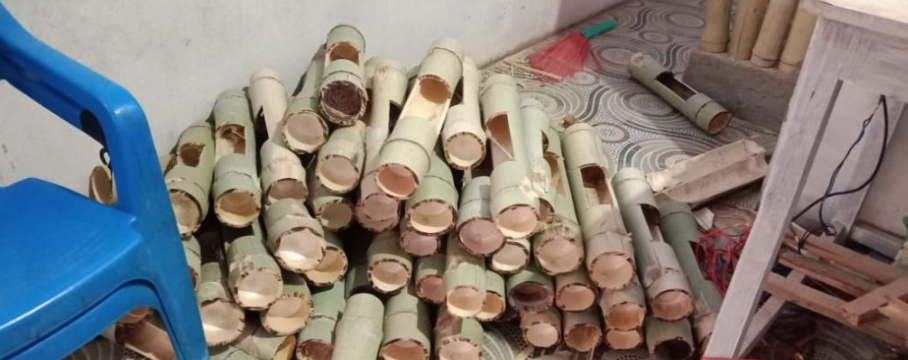
ABOUT SPARROWS
Sparrows are social birds that live in flocks. There are about 9,900 bird species known in the world, with 189 of them extinct and others on the verge of extinction. There are 1,250 species in India, 85 of which are on the verge of extinction.
The bird is 16 cm tall, 21 cm long, weighs 25-40 grams, and has an average life expectancy of 4-5 years. This species flies at 20-24 miles per hour and is distributed throughout the world except Antarctica and Japan.
Article Credit: indianmasterminds